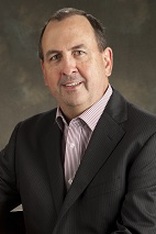In recent years, there has been an increase in the number and activity of student surgical societies and interest groups in Australian and New Zealand medical schools. To remain competitive, the modern medical student seeks out opportunities for additional surgical research and takes on extra-curricular activities, in addition to their medical studies. This has occurred in the context of increasingly busy curricula and concerns about the reduction in time devoted to structured surgical teaching in medical schools. [1] Most recently the introduction of Doctor of Medicine (MD) programs at several Australian universities, where the qualification of the medical graduate no longer includes a Bachelor of Surgery, reflects a transition whereby surgical teaching now takes place largely in expensive postgraduate courses. Medical training in general is lengthening whilst the number of graduates is increasing and the competition for jobs continues to heighten. In this setting, student surgical societies are becoming more active, and will likely play an increasingly important role in facilitating early exposure to surgery during medical school. [2]
Discussion about the length of general medical and specialty training in Australia and New Zealand continues and several authors suggest there is room for reduction. [3,4,5] It has been proposed that early streaming of general practitioners and specialists from the senior medical student level, as seen in the US, should be considered as a way to potentially reduce the length of training without compromising its quality. [3,6,7] Development and implementation of change to training requires coordination and compromise between the various stakeholders, including universities, teaching hospitals, and medical colleges, which makes formal career streaming seem unlikely in the foreseeable future. But does this already happen informally at our medical schools? Throughout Australia, student surgical societies and interest groups help to facilitate early medical student exposure to both academic and clinical surgery. Already, medical students with an interest in surgery enrol in higher degrees by research in surgical areas, develop technical skills from an early level, complete extra professional courses, and take on leadership and advocacy roles in which they liaise with university faculties, Health Education and Training Institute (HETI), Royal Australasian College of Surgeons (RACS), and other professional bodies. Although there are no guarantees for these surgical-hopefuls, our surgical societies do help to facilitate early streaming albeit in an informal way and at the initiative of the student.
The Sydney University Surgical Society (SUSS) was established in 2006 with the aims of promoting the development of the nine surgical competencies outlined by the Royal Australasian College of Surgeons, facilitating communication between students and surgeons, and providing educational opportunities for students. [8] These goals are achieved by organising student grand rounds, surgical skills tutorials, a journal club, advocating at faculty meetings and working with academic surgeons to facilitate student research. SUSS attempts to ensure early exposure for all students by running surgical career events targeted particularly at students in years one and two, such as the annual ‘Introduction to Surgery: SET & Beyond’ lecture which consistently attracts over 200 students. Many students are enrolled in concurrent honours, masters, and PhDs programs in surgical areas and the academic output is high. Academic surgery is encouraged through a monthly journal club meeting and our relationship with the new Institute of Academic Surgery at Royal Prince Alfred Hospital, where the SUSS President sits on the advisory board. A RACS-accredited eight week intensive anatomy by whole body dissection course is run in the elective period at Sydney Medical School and has become an important way for surgically-inclined students to identify themselves and develop their skills at an early stage. [9] Most importantly, medical students who have been involved with SUSS and related activities can progress through medical school and graduate with a competitive set of skills, knowledge, and insight into the training that lies ahead.
The Surgical Interest Network (SurgIN) is a subcommittee of the Australian Medical Students’ Association that coordinates student surgical societies and interest groups across Australasia. Broadly most of these groups have a similar focus on extra-curricular skills sessions and seminars in clinical surgery, although approaches and philosophies vary. In addition to SUSS, other student surgical groups in New South Wales include the UNSW Surgical Society, Surgical Society of Notre Dame Sydney, Surgical Association of Western Sydney, University of Wollongong Surgical Interest Group, University of New England Surgical Society, and Newcastle University Surgical Society. There has been increasing cooperation and shared events between these NSW groups, most recently coming together to organise and compete in the Golden Scalpel Games Student Edition (previously the NSW Students’ Surgical Skills Competition) with sponsorship from RACS and HETI. [10] Organisational structure or models will necessarily vary, as surgical societies must be run within the confines of their University’s bylaws and regulations; particularly regarding whether they are part of their university’s student union, a sub-division of their medical society, or a stand-alone entity. However, communication and cooperation between surgical societies across Australasia has allowed them to learn from each other and gain access to innumerable opportunities such as conferences, seminars, skills workshops, and networking events to maximise engagement and exposure.
In the face of reduced surgical teaching at medical schools, surgical societies in Australia and New Zealand will play an increasingly important role in promoting and fostering surgery and it is critical that they are well run. A society must present themselves as a professionally oriented and academically productive group of students to ensure support from their medical faculty and input from surgeons.
Conflicts of Interest
None declared.
References
[1] Truskett P. Surgeons of the future: where will they come from? ANZ J Surg 2014; 84: 399–400
[2] Dolan-Evans E, Rogers GD. Barriers for students pursuing a surgical career and where the Surgical Interest Association can intervene. ANZ J Surg 2014; 84: 406–11.
[3] Dowton SB. Imperatives in medical education and training in response to demands for a sustainable workforce. MJA 2005; 183: 595-598
[4] McNamara S. Does it take too long to become a doctor? Part 1: Medical school and prevocational training. MJA 2012; 196: 528-530
[5] McNamara S. Does it take too long to become a doctor? Part 2: Vocational training. MJA 2012; 196: 595-597
[6] Taylor TKF. Changes to the University of Sydney medical curriculum. MJA 2008; 189: 414-415.
[7] Taylor TKF. Training doctors – too long in the cellar? MJA 2012;197 (6):328-329
[8] Sydney University Surgical Society (SUSS). About Us [Internet]. NSW (Australia) 2015. Available from: http://surgsoc.org.au/about-suss/
[9] Ramsey-Stewart G, Burgess A, Hill D. Back to the future. Teaching anatomy by whole body dissection. MJA 2010; 193: 668-671
[10] Golden Scalpel Games Student Edition [Internet]. NSW (Australia) 2015. Available from: http://www.ssscomp.org




 technology. In The Digital Doctor, Dr. Robert Wachter, one of America’s 50 most influential physician- executives, discusses the wiring of the healthcare system in the form of electronic health records and ‘big data’ today. While there is hope digitised healthcare will increase the efficiency of practitioners and improve clinical practice, Wachter reports less than optimal experiences – interrupted work flows in the clinic to attend to electronic databases, decreased opportunities for the practitioner to establish healthy doctor-patient relationships, and occasionally, fatal consequences when the technology we so heavily rely on fails us. Indeed, Wachter succinctly summarises today’s epoch of computerised healthcare in his title – “hope, hype and harm.”
technology. In The Digital Doctor, Dr. Robert Wachter, one of America’s 50 most influential physician- executives, discusses the wiring of the healthcare system in the form of electronic health records and ‘big data’ today. While there is hope digitised healthcare will increase the efficiency of practitioners and improve clinical practice, Wachter reports less than optimal experiences – interrupted work flows in the clinic to attend to electronic databases, decreased opportunities for the practitioner to establish healthy doctor-patient relationships, and occasionally, fatal consequences when the technology we so heavily rely on fails us. Indeed, Wachter succinctly summarises today’s epoch of computerised healthcare in his title – “hope, hype and harm.”




.jpg?itok=ia0FVI2-)
